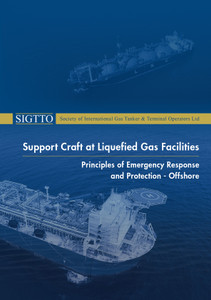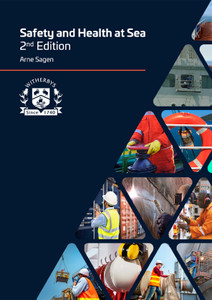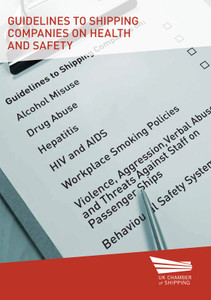
Design for Safety of Marine and Offshore Systems
This publication describes typical formal safety analysis methods and their application in the context of marine and offshore engineering systems. It concentrates on safety analysis techniques and their application to the design stage, operations and to decommissioning and removal. It also discusses influencing elements, including reliability, maintenance, offshore safety case approach, formal safety assessment, risk-based regime, risk acceptance criteria, decision-making, safety management system and human error.
This book is based on a combination of many years’ research and teaching experience from Professor Wang and the extensive industrial experience from Dr Trbojevic. As a result, it has both academic and industrial flavours with particular reference to marine and offshore risk assessment and safety management.
The book looks in detail at safety and reliability; marine and offshore accidents; offshore safety case approach, formal ship safety assessment and design for safety; formal safety analysis methods; risk acceptability criteria; application of some typical formal safety analysis methods; and novel safety modelling and decision-making techniques.
This book will be beneficial for both industrial applications and academic research. It serves as a good reference for marine and offshore safety engineers within the industry and by undergraduates (final year) and postgraduates (MSc and PhD) in maritime or risk assessment related subjects. There are several sections introducing the reader to the marine and offshore scenes and defining the safety regimes that govern marine and offshore design and operations. For the more advanced reader, the final chapter examines the root of problems of coping with uncertainty in the available data and risk-based multiple criteria decision-making.
IMarEST members, please enter 'IMAREST' as Promotional Code during checkout for your members discount.
Preface
Since the 1990s, marine and offshore industrial sectors have been moving towards a risk-based goal setting regime where risk assessment researchers and safety engineers are motivated to develop and apply a variety of risk modelling and decision making techniques. In general, the tendency is that risk assessment is not only used for verification purposes in design and operational processes of marine and offshore engineering systems but also for making decisions from the early stages.
More recently, interest in the improvement of the safety of large engineering systems through risk analysis from the initial stages has been growing considerably, both within industries and regulatory authorities. Some large companies and organisations have used quantitative safety analysis techniques to a considerable extent while others have only used qualitative methods possibly due to lack of risk assessment experiences and/or lack of quantitative data. Over the last two decades, the growing technical complexity of large marine and offshore engineering systems, together with the public concern regarding their safety, has aroused great interest in the development and application of safety assessment procedures. The current trend is to adopt a risk-based approach to meet health, safety and environmental criteria. In such an approach, risk analysis plays a key role as it identifies hazards, categorises the risk and thus provides decision support concerning the choice of arrangements and measures.
Over the years, risk analysis techniques have been developed and perfected. This has led to an abundance of hybrid techniques to either qualitatively or quantitatively express risk levels. This book describes typical formal safety analysis methods and demonstrates their application in the context of risk assessment of marine and offshore engineering systems. The main elements of this book have predominantly been safety analysis techniques and their application; however, influencing elements have been addressed and captured. These include reliability, maintenance, offshore safety case approach, formal safety assessment, risk-based regime, risk acceptance criteria, decision-making, safety management system and human error. Uncertainties that manifest within risk analyses are highlighted and alternative solutions are also presented. The considerable body of high quality reference materials Prof Jin Wang and Dr Vladimir Trbojevic have produced supports the text presented in this book. Many of these references have been peer-reviewed and published in leading academic and professional journals, as well as presented at international conferences.
A number of other recent books have been devoted to the risk assessment theme. This book is distinct from those in that it has evolved from a combination of many years’ research and teaching experience from Prof Wang and the extensive industrial experience from Dr Trbojevic. As a result, it has both academic and industrial flavours with particular reference to marine and offshore risk assessment and safety management. Other features of this book are its treatment of uncertainties in risk analysis and its demonstration of risk acceptance criteria in the decision making process. Also considered are the important topics of human error and safety management system used in the industry.
It will be assumed throughout that the reader has basic background in engineering design and operations in the marine and offshore areas. Further, reasonable competence in probability theory is necessary since no meaningful discussions of risk assessment can be had without it.
Prof Jin Wang, Liverpool John Moores University
Dr Vladimir Trbojevic, Risk Support Ltd
Chapter 1 – Introduction to Safety and Reliability
1.0
Historical
developments
of
safety
and
reliability
assessment
1.1
Current
status
of
design
for
safety
1.2 Design for safety
1.3 Levels of design for safety
1.4 Difficulties involved in design for safety
1.5
Aim
and
objectives
of
the
book
1.6
Scope
of
the
book
1.7 Conclusion
1.8 References
Chapter 2 – Marine and Offshore Accidents
2.0 Review of some major marine and offshore accidents
2.1 Initiating events and accidents
2.2 Provision of risk assessment and prevention of accidents
2.3 Conclusion
2.4 References
Chapter 3 – Offshore Safety Case Approach, Formal Ship Safety Assessment and Design for Safety
3.0
Current
status
of
offshore
safety
assessment
3.1
Current
status
of
formal
ship
safety
assessment
3.2
Port
marine
safety
code
3.3
Offshore
safety
assessment
3.4 Formal ship safety assessment
3.5 Applications of offshore safety case approach and formal ship safety assessment
3.6 Engineering design methodologies for marine and offshore engineering products
3.7 Design for safety methodology for marine and offshore engineering products
3.8
Discussion
on
decision
making
in
the
design
for
safety
process
3.9
Discussion
and
conclusion
3.10
References
Chapter 4 – Formal Safety Analysis Methods
4.0
Introduction
4.1
Top-down
and
bottom-up
safety
analysis
4.2
Qualitative
and
quantitative
safety
analysis
4.3
Failure
probability
distributions
4.4 Safety analysis methods applied to the design for safety process
4.5
Failure
data
collection
programmes
4.6
Selection
of
safety
analysis
methods
4.7
Conclusion
4.8
References
Chapter
5
–
Risk
Acceptability
Criteria
5.0
Introduction
5.1 Tolerability of risk and risk acceptance criteria in the UK
5.2
Offshore
safety
regulations
5.3
Demonstration
of
ALARP
5.4
Risk
criteria
for
oil
spillage
5.5 Risk acceptability criteria for temporary phases of large offshore structures
5.6 Criteria for decision making
5.7 References
Chapter 6 – Application of some Typical Formal Safety Analysis Methods
6.0
Introduction
6.1
Hazard
identification
6.2
Failure
frequency
estimation
methods
6.3 Quantitative risk assessment
6.4
Application
of
risk
assessment
in
concept
design
optimisation
stage
6.5
Application
of
risk
assessment
at
design
stage
6.6
Risk
results
6.7
Application
of
risk
analysis
to
construction
and
installation
of
offshore
structures
6.8
Application
to
the
removal
of
offshore
structures
6.9
Risk
assessment
and
management
6.10
Conclusions
6.11
References
Chapter 7 – Human Error
7.0
Introduction
7.1
Human
reliability
assessment
process
7.2 Management and organisational factors
7.3 Application of human and organisational factors in risk analysis of a design process
7.4 Application of human factors in risk analysis of marine transportation
7.5 References
Chapter 8 – Safety Management System
8.0
Introduction
8.1
Safety
management
system
(SMS)
8.2
An
integrated
or
dynamic
safety
management
system
8.3 Situation with ISM Code
8.4 Measuring the performance of SMS
8.5 Some ideas for assessing the quality of SMS
8.6 References
Chapter 9 – Novel Safety Modelling and Decision Making Techniques
9.0 A risk ranking approach incorporating fuzzy set modelling
9.1 A Bayesian network approach for risk assessment
9.2
A
maintenance
modelling
approach
incorporating
the
delay-time
concept
9.3
A
subjective
safety
based
approach
for
design
selection
9.4 A probabilistic safety based design optimisation approach
Appendix A – An example of FMECA
Appendix B – Fault tree gates symbols and event symbols
Appendix C – The laws for simplifying sets and obtaining the minimum cut sets leading to a top event in a fault tree
Appendix D – Examples for fault tree construction and top event probability calculation
Appendix E – Rules used in Boolean representation tables
Appendix F – An example of simulation analysis
Appendix
G
–
An
example
of
cost-benefit
analysis
Appendix
H
–
Modelling
process
of
delay
time
analysis
Appendix I – The modelling results for four subsystems of a hydraulic hoisting transmission system of a marine crane
Appendix J – The safety and economic modelling
IMarEST
IMarEST is the first Institute to bring together marine engineers, scientists and technologists into one international multi-disciplinary professional body.
Here you will find all the information you need about who we are, what we do and why we do it. You can also find out how IMarEST is governed, learn about the history of IMarEST, founded in 1889, and discover how our associated charity, The Guild of Benevolence, works to support those in the marine community requiring financial support.
https://www.imarest.org/about-imarest
Professor Jin Wang received his BEng in Marine Automation from Dalian Maritime University, PR China, in 1983 and then joined Qingdao Ocean Shipping Mariners Institute as an Assistant Lecturer. He was sponsored by the IMO to do an MSc degree in Marine Engineering at the University of Newcastle upon Tyne, receiving it in 1989. He worked as a Scientific Researcher at Loughborough University in 1990 and then went back to the University of Newcastle upon Tyne to undertake two UK EPSRC-funded safety engineering research projects. He received his PhD in Marine Safety Engineering from the University of Newcastle upon Tyne in 1994. He then continued to conduct an EU-funded project on the study of safety critical software systems as a postdoctoral researcher.
Jin Wang joined Liverpool John Moores University as a Lecturer in 1995 and was promoted to Reader in Marine Engineering in 1999 and Professor of Marine Technology in 2002. He has won several awards for his research work, including the Denny Medal from the Institute of Marine Engineering, Science and Technology (IMarEST) in 2004.
His major research interests are in the areas of safety and reliability-based design and operation of large marine and offshore systems. He has authored or co-authored more than 200 technical publications. He currently leads the Marine, Offshore and Transport Research Group at Liverpool John Moores University.
Dr Vladimir Trbojevic is a Director of Risk Support Ltd, an independent safety engineering and risk management consultancy. He has MSc and PhD degrees from the Aeronautics Department of Imperial College and is a member of the Safety and Reliability Society, Society for Risk Analysis and the American Society of Mechanical Engineers.
He has been involved in the development and application of risk analysis methodologies in all phases of offshore facilities, including design, construction and installation, operation and removal. His marine and offshore operations experience has been successfully used for risk analysis of marine operations in ports where he has applied the ‘bow tie’ approach and has developed bow tie based safety management systems. His other projects range from design assurance, consumer products liability assessment, transportation of LNG, evacuation from high speed rail tunnels, etc.
His research interest includes risk criteria for spillage, tunnels, shipping, ports and land use planning, and development of integrated safety management systems based on ‘bow ties’. He is currently involved in improving the transfer of major hazards and risk analysis knowledge to the workforce and balancing the workforce competence and supervision within an ALARP framework. His publications include more than 70 papers published in scientific and engineering journals and conference proceedings.
- Number of Pages:
- 91
- ISBN:
- 9781902536583
- Binding Format:
- Paperback
- Book Height:
- 286 mm
- Book Width:
- 220 mm
- Weight:
- 1 kg
- Author:
IMarEST and Professor Jin Wang and Dr Vladimir Trbojevic
- Published Date:
- August 2019
- Publication Date:
- August 2019
- Physical:
- (Out of Stock)




